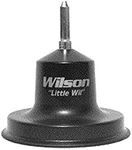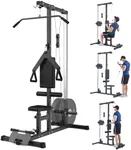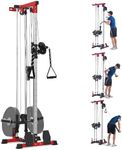Buying Guide for the Best Cb Antennas
Choosing the right CB antenna is crucial for ensuring optimal performance of your CB radio system. The antenna is responsible for transmitting and receiving signals, and its quality and specifications can significantly impact your communication range and clarity. When selecting a CB antenna, consider factors such as your vehicle type, mounting location, and specific communication needs. Understanding the key specifications will help you make an informed decision and ensure you get the best fit for your requirements.Antenna LengthAntenna length is a critical factor in determining the range and performance of your CB radio. Longer antennas generally provide better range and signal clarity because they can transmit and receive signals more effectively. Antennas can range from a few inches to several feet in length. If you need maximum range, opt for a longer antenna, but consider the practicality of mounting and using it on your vehicle. For casual use or if you have space constraints, a shorter antenna may be more suitable.
Mounting LocationThe mounting location of your CB antenna can affect its performance. Common mounting locations include the roof, trunk, bumper, or mirror. Roof-mounted antennas typically offer the best performance because they are higher and less obstructed. However, they may be more challenging to install and less aesthetically pleasing. Trunk and bumper mounts are easier to install but may have slightly reduced performance due to lower height and potential obstructions. Choose a mounting location that balances performance with practicality and aesthetics for your vehicle.
Antenna TypeThere are several types of CB antennas, including fiberglass, whip, magnetic mount, and center-loaded antennas. Fiberglass antennas are durable and flexible, making them suitable for off-road use. Whip antennas are long and provide excellent range but can be cumbersome. Magnetic mount antennas are easy to install and remove, ideal for temporary setups. Center-loaded antennas offer a good balance of performance and size. Consider your usage scenario and choose an antenna type that fits your needs, whether it's durability, ease of installation, or range.
Frequency RangeThe frequency range of a CB antenna determines the range of frequencies it can effectively transmit and receive. CB radios operate on the 27 MHz band, and most CB antennas are designed to cover this range. However, some antennas may offer better performance on specific channels within this band. Ensure the antenna you choose is compatible with the standard CB frequency range and consider any specific channel preferences you may have for optimal performance.
GainAntenna gain is a measure of how effectively an antenna can transmit and receive signals. Higher gain antennas can provide better range and signal clarity. Gain is typically measured in decibels (dB), with higher values indicating better performance. For general use, an antenna with moderate gain (around 3-6 dB) is usually sufficient. If you need maximum range and clarity, look for antennas with higher gain values. Consider your communication needs and choose an antenna with appropriate gain to ensure reliable performance.
DurabilityDurability is an important consideration, especially if you plan to use your CB antenna in harsh environments or off-road conditions. Antennas made from high-quality materials such as fiberglass or stainless steel are more resistant to damage and wear. Look for antennas with robust construction and weather-resistant features to ensure they can withstand the elements and provide reliable performance over time. If you frequently drive in rough conditions, prioritize durability to avoid frequent replacements.




















